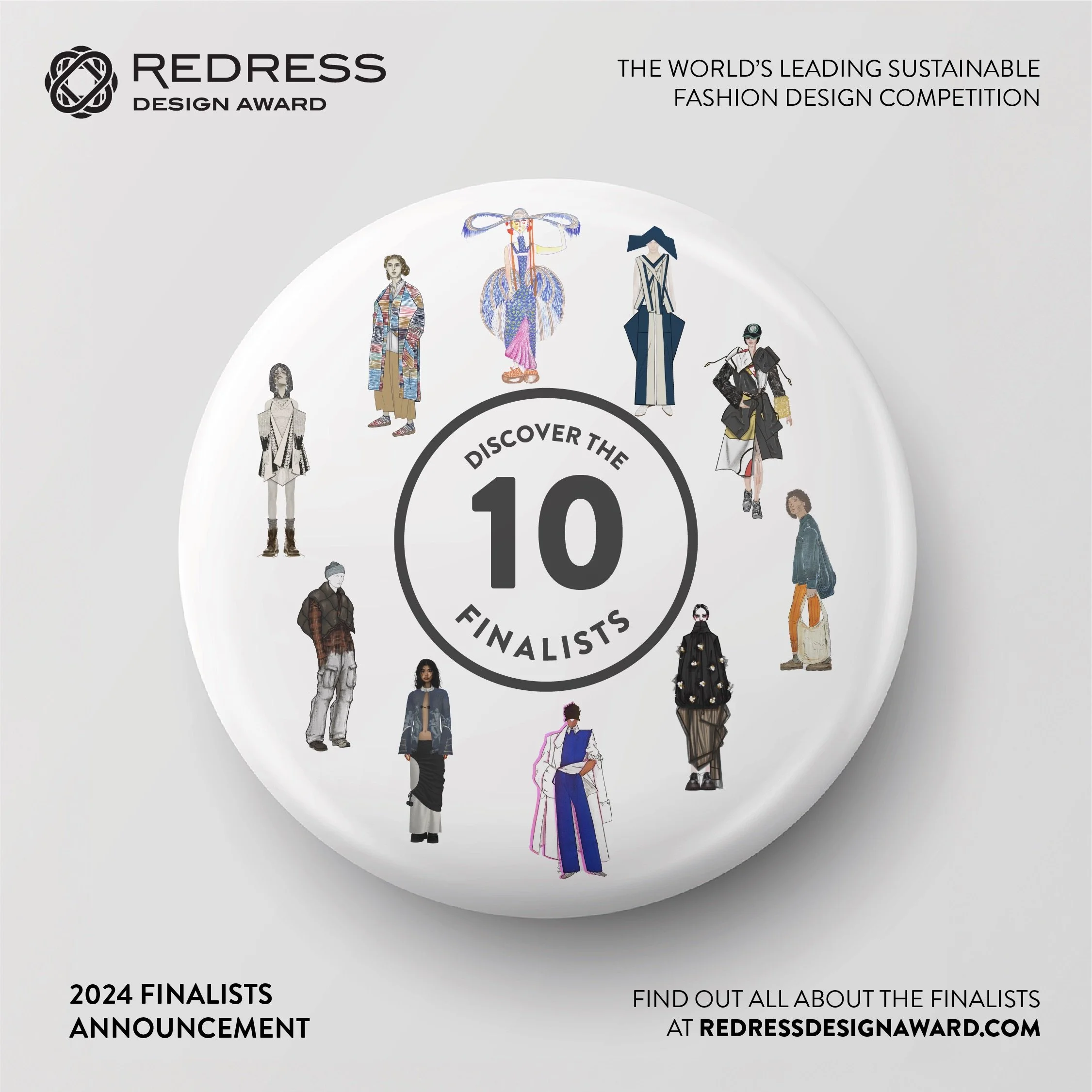Tiger Chung
Redress Design Award 2024 First Prize Winner and Hong Kong Best
Bio
Tiger Chung was the First Prize winner and Hong Kong Best winner of the Redress Design Award 2024. They hold a BA (Hons) in Fashion Design from Nottingham Trent University, and a Higher Diploma in Fashion Design from Hong Kong Design Institute.
“I focus on a people-centric approach to clothing, believing that people wear clothes, not the other way around." – Tiger Chung
redress Design Award Collection
Tiger’s Redress Design Award collection, ‘The Wanderer/無依者’, is a reflection on the wealth disparity in fashion, and is inspired by the unique clothing and lifestyles of ‘street wanderers’. The collection uses upcycled materials including commonly discarded items such as towels and curtains from hotels, felt from airports, car seat covers, and discarded sofas and mattresses, which ensures a stable supply of materials while creating solutions for waste. For patterns, they consider not only aesthetics, which they believe is one of the most important factors for consumers, but also versatility and practicality.
Q&A WITH THE DESIGNER
1. Who or what inspired you to pursue sustainable fashion, and inspired the creativity behind your Redress Design Award collection?
I always take inspiration from modern circumstances by observing our society and different cultures. This collection is inspired by the outfits and lifestyle of homeless wanderers, reflecting the wealth disparities in fashion and sustainability through our purchasing decisions. It’s not about rich and poor, or high and low. Rather, it’s to present a vision of fashion that is more inclusive and reflective of the real world. For this collection, I used different kinds of discarded materials with distinctive and practical approaches to create a new style of homeless chic.
2. What makes your Redress Design Award collection uniquely sustainable? (considering sustainable design techniques you have used in your collection, e.g. zero-waste, upcycling, reconstruction; or waste sources you have chosen)
In terms of fabrics, I upcycled a large number of towels, curtains, blankets, socks, and sofas that I collected from hotels, airlines, and refuse collection points in Hong Kong. These commonly discarded waste items are in fact very comfortable, high quality, and also a stable source of materials. Also, the fabrics do not need extra treatment, as some of them already have a natural fading effect.
For the design, I not only focused on the aesthetics and silhouette, but also considered practical and convenient designs such as zero-waste patterning, multi-styling, or packability, inspiring longevity through durability and functionality. Furthermore, most of the designs are loose, stretchy, or adjustable, fitting different body types. I also added more seam allowances for some designs, making alterations easier to accomplish.
3. What is your career dream or goal? How do you see yourself developing in sustainable fashion in the future?
I want to build a small but precise business for my designer label, where I can offer my exclusive designs with a distinct signature style, without being controlled by other parties. Since sustainable fashion has become mainstream, I plan to keep using distinctive approaches, such as adding practical details and using discarded materials, to challenge fashion norms. I hope to build a respected brand where my sustainable designs can leave an enduring impact on the industry that encourages people to create with the same approach.
4. As a sustainable fashion designer, what is one item you must always keep with you?
While not strictly an item, one thing I always keep with me is a people-oriented approach to my designs. After all, clothes are designed for humans. It’s made for the practical reasons of protection and presentation.
Besides the aesthetic, the convenience and functionality of clothing are also important. This compels me to add more practical and convenient details to my designs, from multi-use for different occasions, to compatibility between items and storage for large garments. These details can greatly improve the usability of the garments, inspiring their longevity.
5. Anything else you would like to share with us about you or your collection?
Tigerstrolling is the fashion label that I founded last year. The brand always takes inspiration from and digs deep into modern problems such as consumerism, waste, and overproduction to create thought-provoking designs that challenge established norms.
The process of upcycling has been fundamental for the brand. Through my designs, I continue to advocate for using existing materials, giving vintage garments or discarded materials new life and meaning — just like the waste textiles I used to create my collection, ‘The Wanderer’.
NEWS
REGION:
Hong Kong
DESIGN TECHNIQUES:
Upcycling
COLLECTION:
Gender neutral









